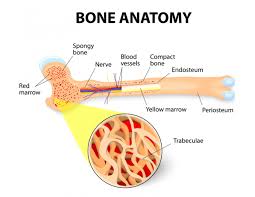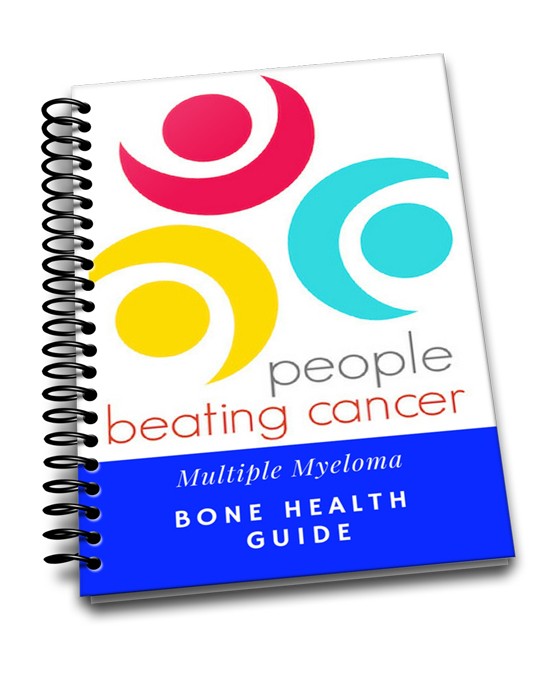“In conclusion, 1-yr treatment with melatonin (mel) increased BMD (lytic lesions) at femoral neck in a dose-dependent manner, while high-dose melatonin increased vBMD in the spine.”
I’m a long-term survivor of a blood cancer called multiple myeloma. According to research, 90% of all MM patients will experience bone damage aka lytic lesions at some point in their lives.
Maintaining bone health is a life-long pursuit for all newly diagnosed MM patients. Newly diagnosed MM patients often ask if their bone damage can be healed.
Conventional oncology says no. Those MM patients who are diagnosed with lytic lesions will not heal their bone damage.
My experience says that I have healed my own extensive bone damage. But this healing didn’t happen overnight and it took a mult-therapy approach to my bone health.
The trick is to figure out how to build bone strength with inexpensive, non-toxic multiple myeloma therapies. Melatonin is an excellent example of an inexpensive bone health therapy.

Further, many multiple myeloma patients struggle with circadian rhythms and sleep. Active therapies or long-term side effects can bother us. Keeping our bones strong and healthy is almost the same as keeping our cancer in remiss
Which brings me to the focus of this post. I take melatonin. Studies show that melatonin is a cancer therapy that increases bone mineral density. Melatonin supplementation helps me enhance my immune system as well as heal my lytic lesions.
The article linked and excerpted below explains that melatonin works in “dose dependent manner” meaning that 1 mg helps a little but 3 mg. helps a lot.
Ed. Note- I wrote those first paragraphs more than five years ago. Since then I discovered that melatonin is good for my chemotherapy-induced cardiomyopathy. So I’m adding heart damage to the list of healing properties of mel.
Below that study is research talking about mel. and MM. The research equivocates on the benefit of melatonin and MM. Each MM patient must decide for him/herself.
The brand of melatonin linked above, Life Extension Melatonin 1 mg has been tested and approved by ConsumerLab.com and is pennies per dose.
Evidence-based, non-toxic therapies to heal lytic lesions-
- Frequent, moderate exercise,
- Nutrition (green leafy veggies, etc.),
- Nutritional supplementation (melatonin, magnesium, vitamin k, etc.)
and more, scroll down the page, post a question or comment and I will reply ASAP.
thank you,
David Emerson
- MM Survivor
- MM Cancer Coach
- Director PeopleBeatingCancer
Recommended Reading:
Multiple Myeloma Therapy, Magnesium, Bone Mineral Density
Multiple myeloma causes lytic lesions and fractures. The impact of fractures on multiple myeloma (MM) survival is unclear. The aim of this study was to evaluate the effect of fractures on survival in MM using data from MM patients diagnosed in Sweden in the years 1990-2013, identified from the Swedish Cancer Registry.
Information on date of birth, MM diagnosis, fractures, and death was collected from central registries. A Cox regression model was used to compare survival in patients with and without a fracture at MM diagnosis and another Cox model was used with fracture as a time-dependent variable to assess the effect of fracture on survival after MM diagnosis.
Results were adjusted for age, sex, year of diagnosis, and previous fractures. A total of 14,013 patients were diagnosed with MM during the study, of whom 1,213 (8.7%) were diagnosed with a fracture at MM diagnosis, and 3,235 (23.1%) after diagnosis.
Patients with a fracture at diagnosis were at a significantly increased risk of death (hazard ratio=1.28; 95% confidence interval: 1.19-1.37). The risk of death was significantly increased in patients with a fracture after MM diagnosis (2.00; 1.90-2.10).
The impact of fractures on survival did not change significantly between the two calendar periods 1990-1999 and 2000-2013 (0.98; 0.89-1.08).
Our large study shows that MM patients with fractures (lytic lesions) are at a significantly increased risk of dying compared to those without fractures, which stresses the importance of preventing bone disease in MM…”
“Conclusions- As highlighted in this paper, HF is a complex clinical syndrome with two predominant etiological aspects, ischemic and non-ischemic HF. In view of the significant alterations of melatonin levels in HF patients, the exploration of the role of melatonin in HF is clinically relevant. So far, results obtained from recent preclinical and clinical studies are promising. Administration of melatonin reverses major pathological processes associated with HF including oxidative stress, apoptosis, necrosis, fibrosis and pathological remodeling (). Though additional mechanistic studies are still required to delineate the underlying mechanisms of the effect of melatonin in HF, melatonin is an important, safe, and affordable molecule worthy to be used as preventive and adjunctive curative therapy in HF.”
“Mel is known for its regulation of circadian rhythm. Recently, studies have shown that melatonin may have a positive effect on the skeleton. By increasing age, the melatonin levels decrease, which may lead to a further imbalanced bone remodeling…
Compared to placebo, femoral neck BMD increased by 1.4% in response to mel (P < 0.05) in a dose-dependent manner (P < 0.01), as BMD increased by 0.5% in the 1 mg/day group (P = 0.55) and by 2.3% (P < 0.01) in the 3 mg/day group. In the melatonin group, trabecular thickness in tibia increased by 2.2% (P = 0.04), and volumetric bone mineral density (vBMD) in the spine, by 3.6% (P = 0.04) in the 3 mg/day…
In conclusion, 1-yr treatment with mel increased BMD at femoral neck in a dose-dependent manner, while high-dose melatonin increased vBMD in the spine.”
Melatonin (MEL), the main hormone produced by the pineal gland, seems to exert antineoplastic activity both in vitro and in vivo. Moreover, several studies reported increased melatonin blood levels in cancer patients.
Plasma mel concentrations were determined in 46 patients with multiple myeloma and in 31 age matched healthy subjects (57.8 +/- 6.9 versus 55.2 +/- 8.9 years). Venous blood was drawn between 7.30 and 9.30 a.m. and mel was assayed using a commercially available radioimmunoassay.
The data were analysed by Student’s t test and results reported as mean values +/- standard deviation. The patients with multiple myeloma showed significantly higher mean mel serum levels than healthy subjects (21.6 +/- 13.5 versus 12.1 +/- 4.8 pg/ml; p < 0.001).
This behaviour could actually represent a phenomenon secondary to an altered endocrine-metabolic balance caused by an increased demand of the developing tumor.
On the other hand, the increased mel secretion might be considered as a compensatory mechanism due to its antimitotic action and therefore as an effort to secrete substances capable of regulating neoplastic growth.”
APPIP ERROR: amazonproducts[
AccessDeniedAwsUsers|The Access Key Id AKIAJAJ37JVNL7OUU4CA is not enabled for accessing this version of Product Advertising API. Please migrate your credentials as referred here https://webservices.amazon.com/paapi5/documentation/migrating-your-product-advertising-api-account-from-your-aws-account.html.
]




